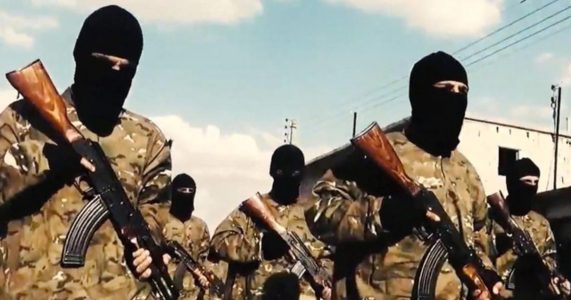
Operations “hit-and-run” is the new ISIS tactic for terrorist attacks
In recent weeks, IS’s al-Naba online newspaper has encouraged followers to adopt guerrilla tactics and published detailed instructions on how to carry out hit-and-run operations.
The group is using such tactics in places where it aims to expand beyond Iraq and Syria. While IS has tried this approach before, the guidelines make clear the group is adopting it as standard operating procedure.
At the height of its power IS ruled over millions in large parts of Syria and Iraq.
But in March it lost its last significant piece of territory, the Syrian village of Baghouz, and the group has been forced to return to its roots: a style of fighting that avoids direct confrontation, weakening the enemy by attrition and winning popular support.
This attempt to revive Islamic State has so far been successful, analysts say, with many global attacks in recent weeks, including in places never before targeted by the group.
“The sad reality is that ISIS is still very dangerous,” said Rita Katz, executive director of the SITE Intelligence Group, which tracks extremists. “It has the tools and foundations needed to build insurgencies across the world.”
In a rare video published by IS’s Al Furqan network in April, the group’s leader Abu Bakr al-Baghdadi encouraged followers to fight on and weaken the enemy by attrition, stressing that waging war is more important than winning.
It was more downbeat than his only other video appearance from the pulpit of the Grand al-Nuri Mosque in Mosul in 2014, when he was dressed all in black and sporting a fancy watch.
In the new video, he sat cross-legged on a mattress as he spoke to three aides. A Kalashnikov rifle rested against the wall behind him — the same type of weapon that appeared in videos of Al Qaeda founder Osama bin Laden and Baghdadi’s predecessor Abu Musab al-Zarqawi, who both adopted the guerrilla warfare tactic.
“He appeared as a commander of hardened mujahideen, of an insurgency group, not the pampered leader of a well-off caliphate,” said Katz. “His appearance totally mobilized Islamic State’s supporters all over the world.”
These guerrilla warfare manuals are the most detailed IS has published yet, Katz said.
The language is similar to the one used in manuals published years ago by Al Qaeda in Saudi Arabia via its “al-Battar” electronic magazine, which provided military instructions to supporters and cells around the world, she said.
IS’s new manuals show that the group is short on fighters and finances, she added.
When it lost its territory, IS also lost an important source of income, mainly taxes and oil revenue.
“Financially, territorially and militarily speaking, the group is very weak,” said Katz. “That said, ISIS leadership seeks to revive its so-called caliphate, with special attention on areas outside of Iraq and Syria.”
Although not all of the group’s claims can be confirmed, it has announced some wide-ranging operations.
On April 18, IS claimed its first attack in Democratic Republic of Congo and announced the creation of a “Central Africa Province” of the “Caliphate”. Since then the group has claimed several more attacks in Congo.
On May 10, IS claimed it had established a province in India. It also said IS fighters had inflicted casualties on Indian soldiers in Kashmir.
The same day, militants on motorbikes stormed a town in northeastern Nigeria and opened fire on residents and soldiers in an attack later claimed by Islamic State.
IS has claimed more operations in Nigeria and dozens of similar attacks in recent weeks in Afghanistan, Niger, Somalia, Egypt, Pakistan, Chechnya, Sri Lanka and elsewhere. In several cases, the group published pictures of bullets, rifles and other weapons it said it had collected from soldiers.
By striking in a wide range of places, IS is promoting itself and proving it can reorganize and modify its strategy, said Laith Alkhouri, co-founder and senior director at Flashpoint, which monitors militants’ activity online.
“ISIS super-temporarily seizes areas, flexes its muscles, subdues locals, even recruits from amongst them, and taunts governments by exposing security flaws or weaknesses,” he said. “This is a considerably important avenue for ISIS’s growth.”
Guerrilla war is a less costly way to inflict damage and the group is using the tactic where it wants to expand, such as eastern Afghanistan, northeastern Nigeria, Somalia, North Africa, the Indian subcontinent and central Africa, he said.
“The group’s media realizes the importance of highlighting this, not only for boosting the morale of the support base,” Alkhouri said. “But just as importantly for expanding its footprint geographically — effectively setting up and expanding unrest zones around the world.”
Source: BM





